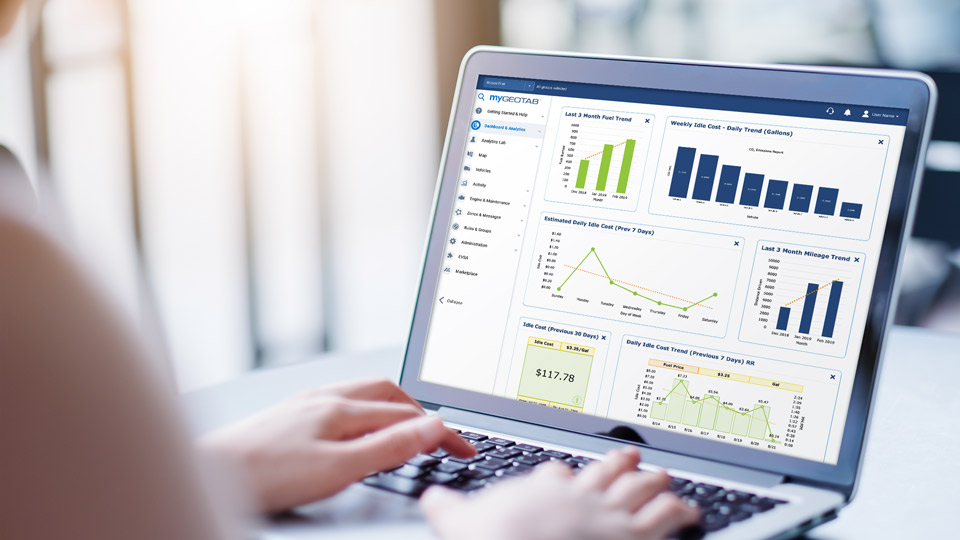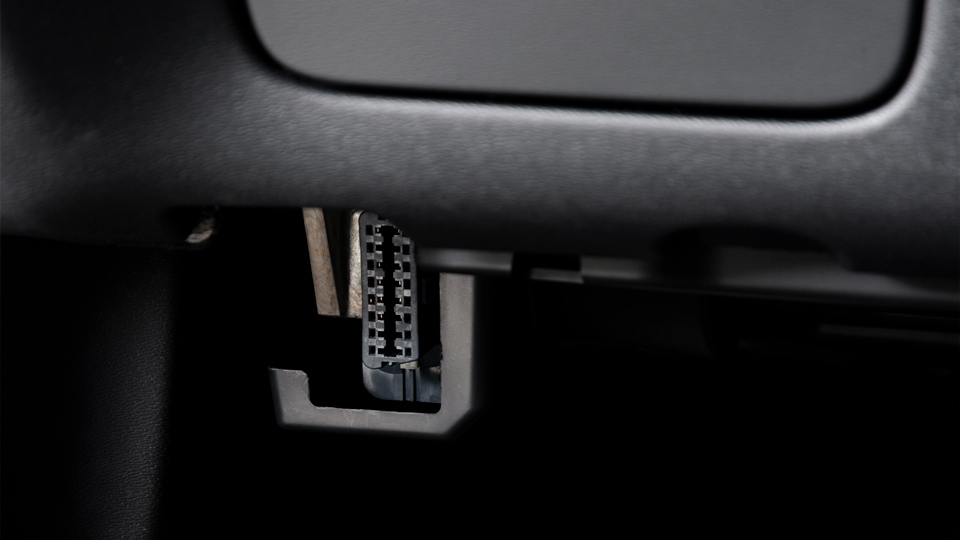A fresh take on improving fleet efficiency
Is it possible to increase safety, productivity and efficiency at the same time? Read about fresh approaches to fleet efficiency.
By Geotab Team
Aug 3, 2018
Updated: Jul 7, 2022

Is it possible to increase driver safety, productivity and fleet efficiency at the same time? How is it done?
Colin Sutherland, Executive Vice President of Sales and Marketing at Geotab, weighed in on that question in an interview for the PwC Canada Vision to Reality Awards, which celebrate innovation in the tech industry. Using telematics technology like Geotab, Sutherland says, can help fleets measure and improve vehicle and driver safety, reduce fuel costs, optimise fuel usage, and streamline the work of fleet managers — who already have their hands full with day-to-day operations.
Measuring Fleet Efficiency
Fleet efficiency, similar to business efficiency, focuses on getting the maximum output from the minimum input. That means ramping up productivity and keeping costs down. Fleet efficiency is calculated based on a number of moving parts, including productivity, fuel consumption, emissions, routes, costs and driver safety.
Lucky for businesses, telematics can support them in this task — along with a wide range of others. Using a combination of telematics via the Geotab GO device plus integrated Marketplace solutions, fleet managers can track their vehicles while monitoring data on fuel efficiency, driving safety, route optimisation, and vehicle maintenance in real-time.
Read more on fleet optimisation here.
Three Fresh Approaches to Fleet Efficiency
Sutherland explains that fleet efficiency can be broken down into three parts: safe driving, technology automation and benchmarking with data.
- Start with the Driver
According to Sutherland, fleet efficiency boils down to a simple point: “A more conscientious, safe driver improves fuel efficiency of the vehicle.”
Geotab telematics make it easy to collect and follow fleet trends from MyGeotab. This information can be useful to both drivers and managers.
Sutherland explains: “Our technology itself has a GPS and accelerometer which tells me how fast you're going forward, backward, side to side, even pothole detection, up and down, in addition to some sensors to do with the diagnostics in the vehicle...”
Fleet managers can inform their employees of best driving practices, which when put into practice, result in less fuel wasted and fewer incidents of aggressive driving, both of which reduce fuel costs. When a driver is aware of his or her acceleration, braking, or speeding habits, they are more conscientious and time-efficient behind the wheel.
2. Let Technology do the Work
Geotab puts technology in the driver’s seat when it comes to fleet management. Telematics devices, or the “little black boxes” are quickly installed in cars, vans or lorries. Once a speed or driving rule is set up in the software by the fleet manager, for example, speeding, excessive idling, or not wearing a seat belt, an audible buzzer notification will sound if the driver breaks the rule.
With GO TALK, a driver safety Add-On for Geotab, it’s also possible to send spoken alerts in the vehicle. The messages can even be customised, doubling as a sort of driving coach. This real-time feedback creates an instant reaction, making it an effective tool to improve efficiency.
“All the driver really has to do is be told by his manager, ‘When you hear this alert, that's because you're rapidly accelerating, so don't rapidly accelerate,’" says Sutherland. “You instantly react to it, and your coaching becomes very, very effective.”
3. Tap into Aggregate Data
Going one step further, fleets can use benchmarking to gain insight and drive decisions leading to tangible results, like revenue generation or cost savings. It also helps businesses find places to improve that they wouldn’t have otherwise thought of.
Data.geotab.com, a powerful new resource, offers fleets access to data intelligence based on data from over 1 million vehicles equipped with Geotab devices. A whole range of datasets are available.
Areas of Idling pinpoints the locations where vehicles are idling the most. Idling burns unnecessary fuel, which increases fuel costs, and can also cause wear and tear on the vehicle. Taking steps to manage and reduce idling can cut costs and help increase fleet efficiency.
“Now the small retailer and the small businesses have access to all of that aggregate data so they can benchmark their performance against an aggregate data pool,” says Sutherland. Small fleets can get the competitive edge by getting data smart.
Conclusion
The bottom line is that transportation is changing, and it requires new innovative ways of thinking. Today, businesses are increasingly making use of data to automate and improve.
See also: Measuring fleet productivity and managing downtime with telematics
Subscribe to the Geotab Blog
The Geotab Team write about company news.
Subscribe to the Geotab Blog
Related posts

Data-Driven Innovations in Fleet Management: highlights from Geotab Mobility Connect 2024
November 28, 2024
3 minute read





